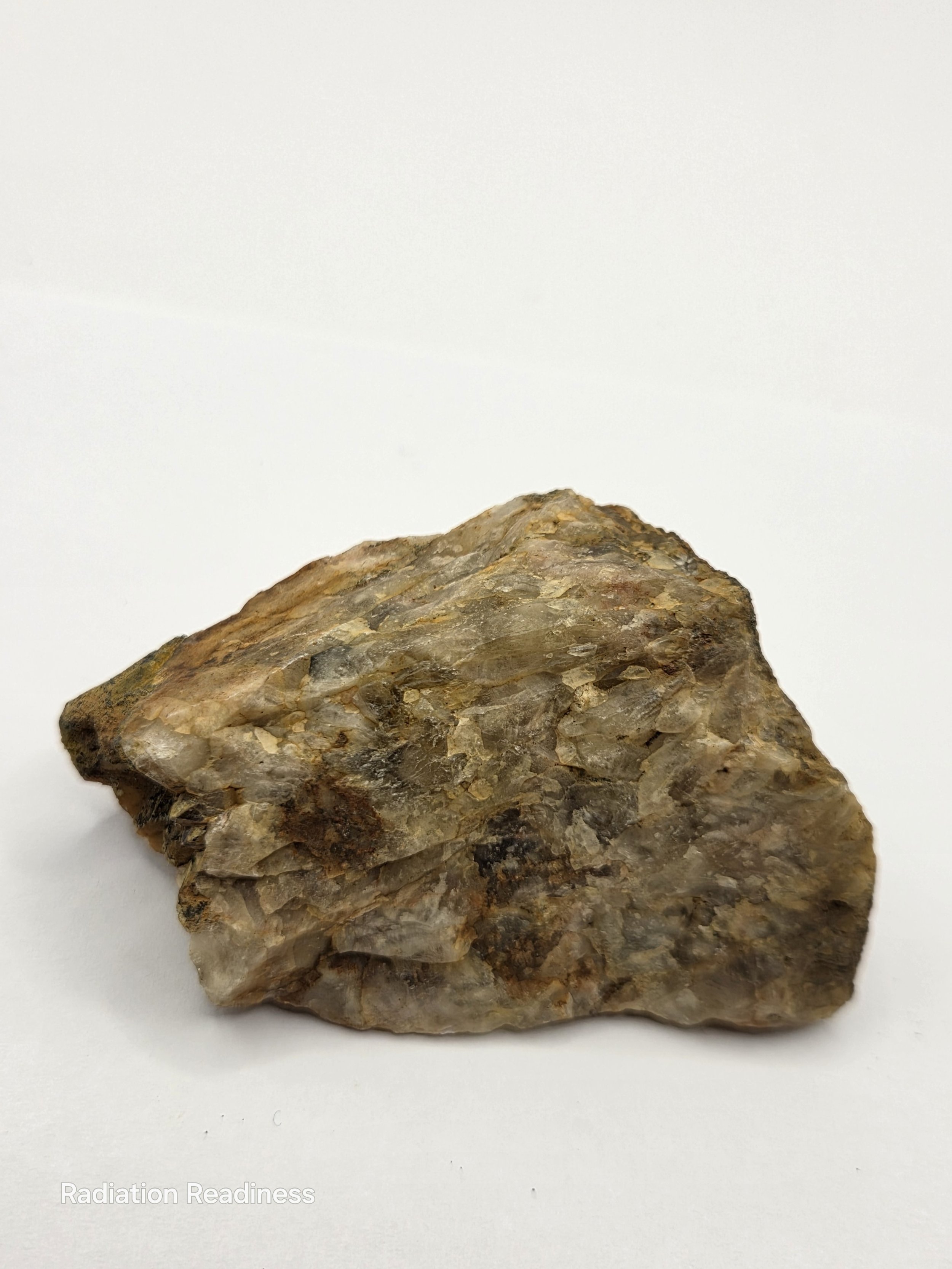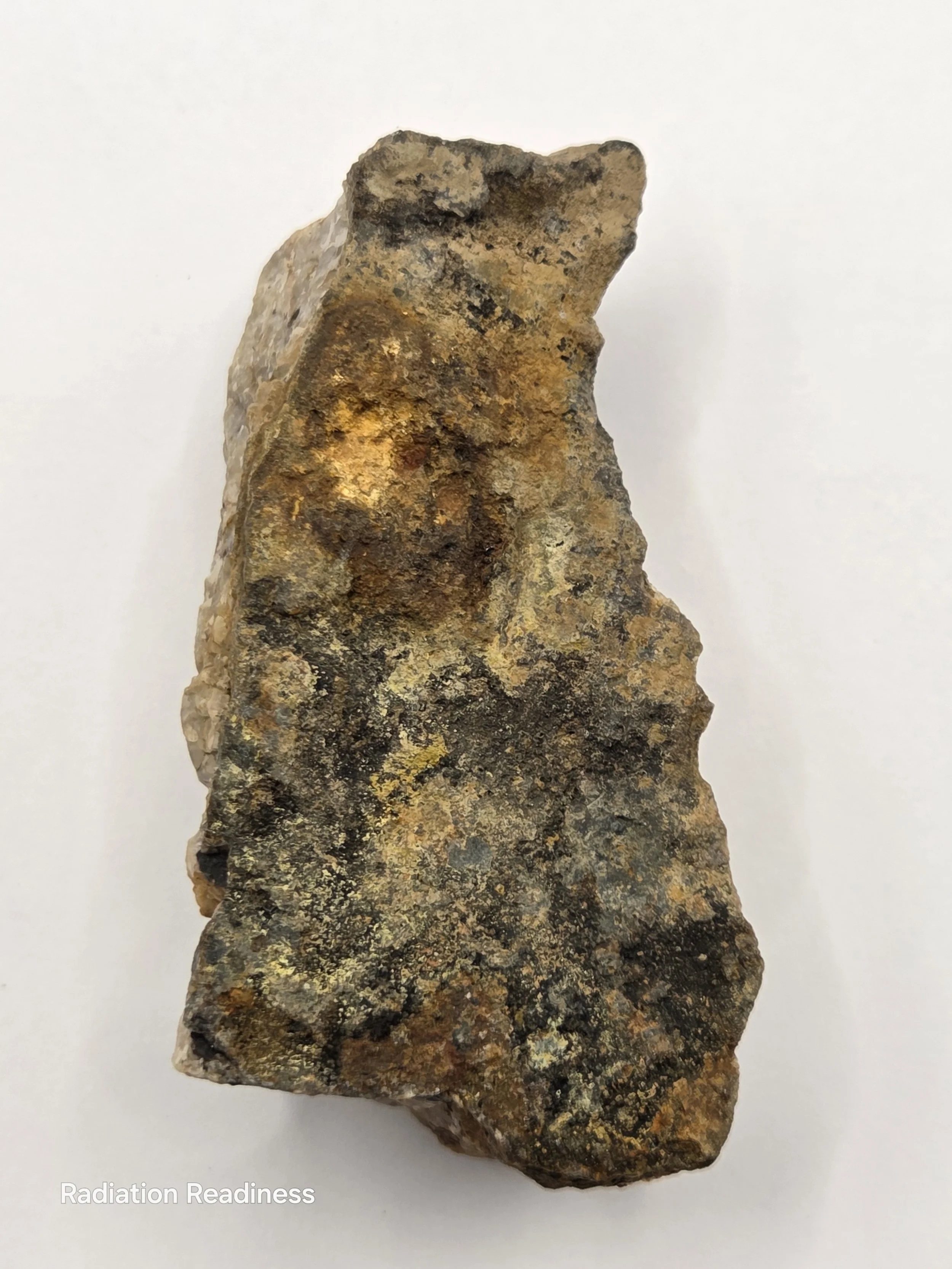Measurements are taken of the most active part of the ore with the mesh screen of the detector flush with the area being measured. Measurements are taken with an LND 7311 αβγ “pancake” probe (Rotem Ram Gene-1) and are dead time corrected. Measurements with different devices and probes, i.e. beta/gamma only, will yield different results. This is normal and to be expected. Energy compensated gamma readings are taken with the Automess 6150.
Uranium 238 is primarily an alpha emitter but as it decays into its daughter radioisotopes, beta and gamma radiation are also emitted. Most of the gamma radiation emitted from the ore originates from radium decay. Since U-238 has an extremely long half-life, pieces will stay ‘hot & spicy’ for a long time.
Aside from mineral collections, these pieces of ore are well suited for geology instruction and classroom use.
Fun experiments to perform might include:
· Shielding Tests: Determine which materials effectively shield against alpha, beta and gamma radiation. (The denser the material, the better it blocks the rays).
· Detection Distance Tests: Measure the distances it takes for the different rays to be detected by your device. (alpha particles travel 3 - 7 cm, beta travels 20 cm - 3 m, gamma rays are ‘infinite’, require shielding).
· Demonstrate Inverse Square Law: The radiation inverse square law specifies that: the intensity of the radiation goes down by the square of the distance from the source. For instance if you move twice as far from the source the intensity of the radiation will decrease by a factor of 4. Therefore, since the intensity and distance are inversely related, you can calculate the change in intensity as the distance changes and test actual results using a Geiger counter.
· Sensitivity Tests: Use different probes & Geiger counters to determine their sensitivity and capability to measure radiation.
N.O.R.M (Naturally Occurring Radioactive Material), in this case pitchblende, can be used as a check source for your radiation detecting equipment.
Unique Samples: - each of our pieces are unique: there is only one of each. We have no guarantees we can restock with a similar mineral sample.
*The Final Photos Showing How Samples Are Packaged Are Examples Of How You Will Receive Your Sample (UK ONLY). The Specific Rock Shown In The Box Is An Example Only And Not Included. *Packaging NOT Available On International Orders.
Health and Safety
Users of NORM should minimize unnecessary exposure and use Personal Protective Equipment (PPE).
Handling the sample should be done in an easily cleaned area.
Wash hands after handling.
Small samples of NORM do not pose an immediate or long-term risk to health, provided the material is not ingested, inhaled or kept in prolonged contact with the body.
Much of the beta and gamma radiation can be blocked with distance and shielding (plastic, glass, metal etc.).
The ore will produce a small amount of radon gas over time from natural radioactive decay.
Pieces of NORM such as small pieces of unprocessed pitchblende uranium are ‘out of scope’ and exempt from licensing and regulation, as the material is not used or suitable for its ‘radioactive, fissile or fertile properties’.
Radioactive Substances Legislation guidance, Exemption provisions and NRPB-R306
Shipping is in compliance with UN 2910 and ADR 2.2.7.2.1.1.


































